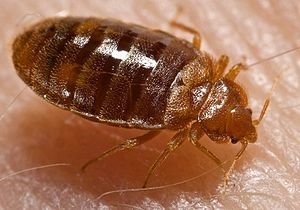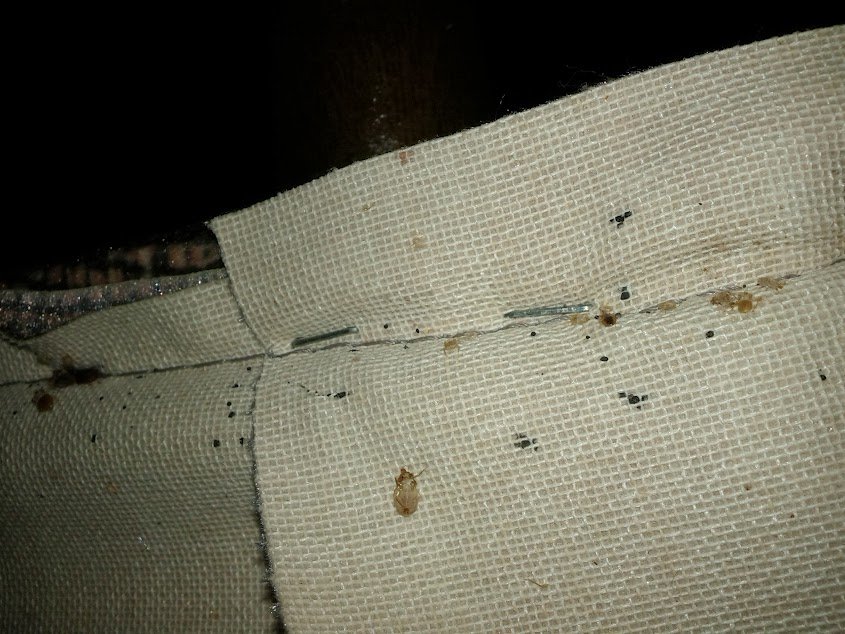Prevent Bedbugs From Infesting Your Home
 Want to know how to prevent bedbugs in your home? We’ve all heard horror stories about these pesky little creatures taking over people’s beds and causing itchy bites all over their bodies.
Want to know how to prevent bedbugs in your home? We’ve all heard horror stories about these pesky little creatures taking over people’s beds and causing itchy bites all over their bodies.
Bedbugs are small insects that feed on human blood and can be difficult to eliminate once they have infested your home. We will discuss some effective ways to prevent bedbugs from infesting your home, so you can sleep peacefully at night without worrying about these unwelcome guests.
One of the most important steps to prevent bedbugs is to be proactive in keeping them out of your home in the first place. Start by regularly inspecting your bedding, furniture, and any other areas where bedbugs are known to hide. Look for signs such as small rust-colored stains on your sheets or mattresses, tiny dark spots (which are bedbug feces), and discarded molted skins.
If you spot any of these signs, it’s essential to act quickly to prevent the infestation from spreading. In the next section of this article, we will dive deeper into the specific steps you can take to prevent bedbugs from entering your home and spreading their presence. So keep reading to find out more!
How To Prevent Bedbugs From Infesting Your Home
Introduction
Nobody wants to deal with a bedbug infestation. These pesky insects can disrupt your sleep, leave itchy bites all over your body, and even cause anxiety and distress. The good news is that there are steps you can take to prevent bedbugs from infesting your home.
In this article, we will explore the different aspects of bedbug prevention, from understanding the insects to effectively treating an infestation. By following these tips and recommendations, you can ensure that your home stays bedbug-free and your peace of mind intact.
Understanding Bedbugs
What are bedbugs?
Bedbugs are small, wingless insects that feed on the blood of humans and animals. They are flat, oval-shaped, and about the size of an apple seed. These pests are nocturnal and tend to hide during the day, making it difficult to spot them. Despite their name, bedbugs can be found in various places other than beds, such as furniture, walls, cracks, and crevices.
Lifecycle of bedbugs
To effectively prevent a bedbug infestation, it’s crucial to understand their lifecycle. A bedbug goes through several stages: egg, nymph, and adult. Eggs are tiny and nearly invisible to the naked eye.
After hatching, the nymphs go through five molts before reaching adulthood. Bedbugs can survive for months without feeding, making them resilient and hard to eliminate once they infest your home.
Signs of bedbug infestation
It’s essential to be able to identify the signs of a bedbug infestation early on. Some common indicators include:
- Bites: Bedbug bites are often itchy and appear in clusters or rows on exposed skin. However, not everyone reacts to bedbug bites, so it’s essential to look for other signs as well.
- Bloodstains: After feeding, bedbugs may leave behind small bloodstains on your sheets or pajamas.
- Dark spots: Bedbug excrement, which consists of digested blood, appears as dark spots on your mattress, bedding, or upholstery.
- Musty odor: A strong, musty odor may be present where bedbugs are infesting.
Being vigilant and recognizing these signs will help you take action quickly, preventing a small infestation from becoming a larger problemm.
Preventing Bedbug Infestation
Prevention is the key when it comes to bedbugs. By following these preventive measures, you can minimize the risk of these unwanted guests invading your home.
Regularly inspecting your home
Regular inspections of your home are crucial for identifying any signs of bedbug activity. Focus on areas where bedbugs are likely to hide, such as your mattress, furniture, and cracks in the walls. If you suspect an infestation, look for the signs mentioned earlier. Early detection can help you take prompt action and prevent the infestation from spreading.
Ensuring cleanliness and hygiene
Maintaining a clean and hygienic environment is essential for preventing bedbugs. Regularly vacuum your home, paying close attention to your mattress, crevices, and upholstered furniture. Dispose of the vacuum bag or empty the canister immediately in a sealed bag outside your home to prevent any potential bedbugs from reinfesting your living space.
Sealing cracks and crevices
Bedbugs can easily hide in cracks and crevices, so it’s vital to seal any openings in your walls, baseboards, and furniture to prevent their entry. Use caulk or sealant to fill in gaps and cracks, making it harder for bedbugs to find a hiding spot.
Using mattress and pillow covers
Encasing your mattress and pillows in bedbug-proof covers adds an extra layer of protection. These covers are made of a tightly woven fabric that prevents bedbugs from infesting your bedding. Remember to choose covers specifically designed to be bedbug-proof and regularly check for any signs of damage or wear.
Bedbug-proofing luggage and clothing
Bedbugs can hitch a ride on your belongings when you travel, so it’s essential to take precautions while handling luggage and clothing. Use a hard-sided suitcase or a bedbug-proof luggage liner to protect your belongings during transit. When you return home, unpack your luggage outside or in a well-lit area, and immediately wash and dry your clothes on high heat to kill any potential bedbugs.
Treating Bedbug Infestation
Despite your best efforts, a bedbug infestation can still occur. If you suspect an infestation or have confirmed the presence of bedbugs in your home, it’s vital to take immediate action to eliminate them.
Identifying the infested areas
Bedbugs tend to hide in areas close to where people sleep or spend a significant amount of time, such as beds, couches, and chairs. Pay close attention to these areas and inspect for signs of live bedbugs, casings, or fecal spots. Identifying the infested areas will help guide your treatment approach.
Hiring professional exterminators
For severe infestations or if you are unable to eliminate the bedbugs on your own, it’s advisable to seek professional help. Exterminators have the expertise and specialized equipment to effectively eradicate bedbugs from your home. They may use a combination of treatment methods, including chemical sprays, steam treatments, and vacuuming.
Applying chemical treatments
Chemical treatments can be an effective solution for bedbug infestations. However, it’s essential to follow the instructions provided by the manufacturer and exercise caution when using these products. Some common chemical treatments for bedbugs include insecticide sprays, dusts, and aerosols. Remember to ensure proper ventilation and use protective equipment when applying these treatments.
Using heat or cold treatments
Bedbugs are sensitive to extreme temperatures, making heat or cold treatments another viable option. Using heat, such as steam cleaning or hot dryers, can effectively kill bedbugs and their eggs. Similarly, exposing infested items to freezing temperatures for an extended period may also eliminate the pests. Consult professional pest control experts for guidance on implementing these treatments safely and effectively.
Washing and drying infested items
If you discover bedbugs on your clothing, bedding, or other washable items, it’s important to launder them promptly. Use hot water and a high-temperature dryer setting to ensure that the bedbugs are killed. If an item is not washable, such as a stuffed animal or delicate fabric, consider placing it in a tightly sealed bag and leaving it in a freezer for a week.
FAQs about Bedbug Infestation
Can bedbugs spread diseases?
While bedbugs are a nuisance, they are not known to transmit infectious diseases to humans. Their bites can cause itchiness and discomfort, but the primary concern is the psychological distress and inconvenience caused by an infestation.
What are some common misconceptions about bedbugs?
One common misconception is that bedbugs only infest dirty or unsanitary environments. However, bedbugs can be found in clean homes and hotels as well. Another misconception is that bedbugs are only found in beds. In reality, they can hide in various places, including furniture, luggage, and clothing.
How do bedbugs enter homes?
Bedbugs can enter your home through various means. They often hitch a ride on luggage, clothing, or used furniture. Additionally, they can crawl through cracks and crevices, electrical outlets, or even from neighboring infested units in multi-unit buildings.
Can bedbugs survive in cold temperatures?
While bedbugs are more active in warmer temperatures, they can survive in cold climates as well. However, exposure to freezing temperatures for an extended period can be lethal for them.
Are DIY treatments effective against bedbugs?
DIY treatments can help in small infestations or as a preventive measure. However, severe infestations often require professional intervention. DIY treatments should be used in conjunction with professional advice and regular inspections to ensure long-term success.
Tips for Travelers
Inspecting hotel rooms before settling in
When traveling, it’s crucial to inspect your hotel room for any signs of bedbug activity. Check the mattress and headboard for live bugs, casings, or bloodstains. Pay attention to the seams and crevices of upholstered furniture as well. If you notice any signs of bedbugs, request a different room or consider changing hotels.
Using luggage stands instead of placing bags on the floor
Avoid placing your luggage directly on the floor or bed. Instead, use luggage stands or elevated surfaces to keep your bags off the ground. Bedbugs cannot crawl up smooth surfaces easily, reducing the risk of them hitching a ride on your belongings.
Keeping clothing and bags elevated
While staying in a hotel, avoid placing your clothes or bags on the bed or floor. Instead, use hooks, hangers, or shelves to keep your belongings elevated. This reduces the chances of bringing bedbugs home with you.
Washing and drying clothes after a trip
As soon as you return home from your trip, wash and dry all your clothes on high heat, even if you haven’t worn them. This will effectively kill any potential bedbugs that may have hitched a ride in your luggage.
Keeping luggage away from your bed at home
Once you’re back home, store your luggage away from your bed or sleeping area. A garage or storage area is an ideal location. Avoid keeping your luggage in your bedroom, as this reduces the risk of any lingering bedbugs finding their way into your living space.
Conclusion
To prevent bedbugs from infesting your home requires a combination of vigilance, cleanliness, and proactive measures. Regularly inspect your home for signs of bedbugs, maintain a clean environment, and seal any cracks or crevices. Bedbug-proof your bedding and take preventive measures while traveling. If you do encounter an infestation, prompt action is crucial.
Whether through professional exterminators or DIY treatments, eliminating bedbugs requires thoroughness and persistence. By following these guidelines, you can minimize the risk of bedbugs infesting your home and enjoy a peaceful, bug-free environment.
Effective Bedbug Control and Prevention: Professional Pest Control Insights
